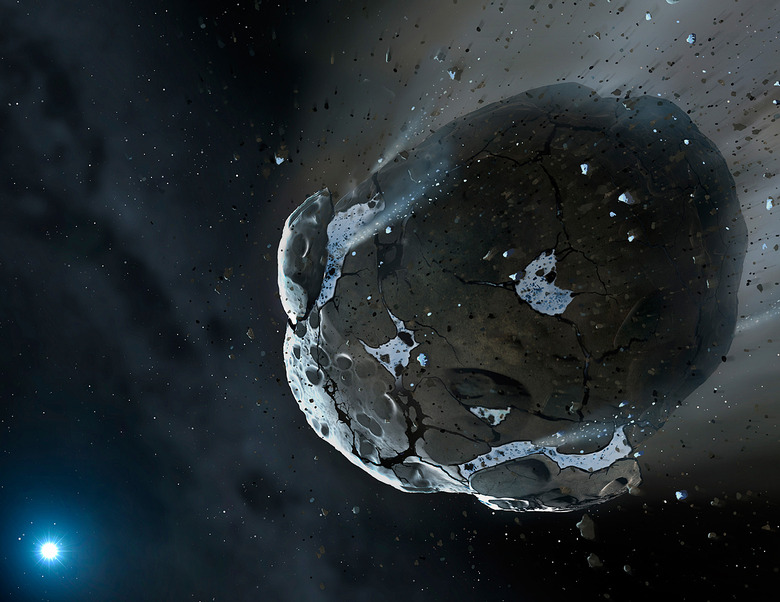Earth Got Blasted By Asteroids 800 Million Years Ago
- An asteroid bombardment impacted both the Moon and Earth roughly 800 million years ago, new research suggests.
- By dating the craters on the Moon, researchers were able to estimate when the Earth-Moon system was nailed by an asteroid storm.
- The scientists believe the bombardment dramatically affected Earth and everything living here at the time.
When you look at the Moon you'll see plenty of craters of various sizes, telling the story of the many impacts Earth's tiny neighbor has endured. As researchers become more and more skilled at aging these features, they get a better idea of the kind of impacts that Earth itself has experienced over a similar timeline.
Now, researchers from Osaka University have completed their work on examining nearly 60 lunar craters using observations from the lunar orbiter Kaguya. What they discovered is that the Moon experienced a bombardment of asteroid impacts roughly 800 million years ago. That means that the Earth almost certainly experienced similar hardships around the same time.
As the researchers explain in a new paper published in Nature Communications, determining the history of asteroid impacts on Earth is difficult due to the fact that weather erodes and essentially erases the traces of most impact craters. The Moon, on the other hand, experiences no such erosion and can act as a sort of physical record of asteroid bombardments in the Earth-Moon system.
By studying the age of certain craters on the Moon — and examining which craters overlap or were created within other craters — scientists can get a pretty good idea of when the Earth and Moon experienced large numbers of asteroid impacts. In this case, the researchers determined that the age of the craters matches up well with a time in Earth's history where the environment changed dramatically, suggesting that many impacts over a short period of time contributed to drastic shifts in the environment on Earth.
"Considering the radiometric ages of ejecta from Copernicus crater and impact glass spherules from various Apollo landing sites, we conclude that sporadic meteoroid bombardment occurred across the whole Moon at approximately 800 Ma," the researchers write. "Based on crater scaling laws and collision probabilities with the Earth and Moon, we suggest that at least (4–5) × 1016 kg of meteoroids, approximately 30–60 times more than the Chicxulub impact, must have plunged into the Earth-Moon system immediately before the Cryogenian, which was an era of great environmental changes."
The massive Chicxulub crater is thought to be the best evidence of an asteroid impact that caused the mass die-off of dinosaur species and many other life forms on Earth. This new study suggests that, overall, up to 60 times the mass of the Chicxulub asteroid slammed into Earth gradually in smaller impacts that have been largely erased from Earth's surface.
